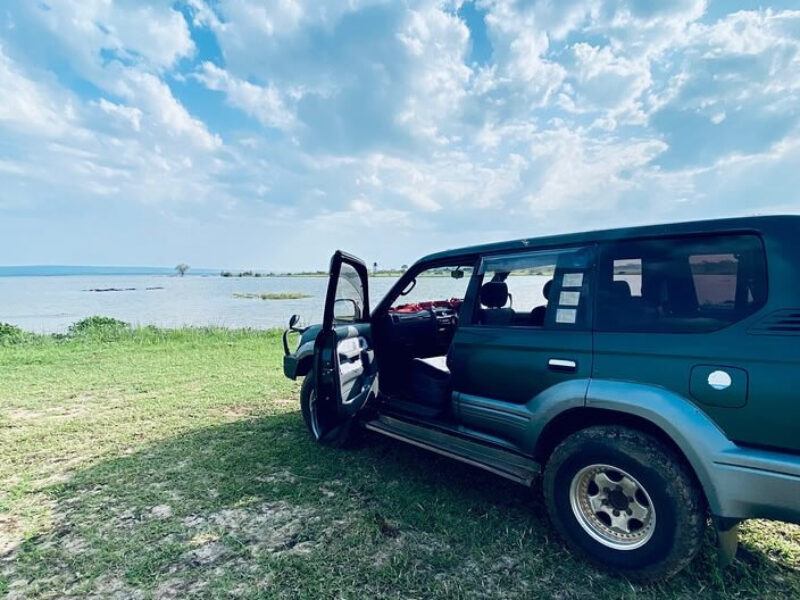
As the road network in Uganda continues to improve, the possibilities for in-country road trips are multiplying. There is almost nowhere in Uganda that can’t be reached in a day by car and, depending on your tolerance for hours on the road, the country is becoming increasingly accessible. But, before you leap into the car and drive off toward the horizon there’s a few things you should consider when planning your road trip in Uganda. As the old adage goes, ‘failing to prepare is preparing to fail’ and cross-country road trips are no exception. In fact, the key to a safe and memorable road trip in Uganda is proper organization. KAMPALA CITY’s guide to road trippin’ in the Pearl of Africa will help to get organized before you get on the road.
- Where are we going? Sounds like an obvious place to start, but working out exactly how long you have for the trip will inform the route you take and what have time to reach. Be realistic about how much you can pack into a trip, and remember that journey times in Uganda depend heavily on the prevailing weather and state of the roads. A little reconnaissance goes a long way. Find someone who has travelled a route recently to find out if there’s anything you should know.
- Do you have the right car for the job? Is your car appropriate for the trip that you are planning? Is your Toyota Corolla really going to be able to handle the murram roads of Northeastern Uganda, or the washboard dirt roads in Murchison? Think about where you want to go and make enquiries about the state of the roads in that region, or national park, before making a decision on the vehicle.
- In good repair? Even if you have the right vehicle it still won’t do you any good if it breaks down due to disrepair. Take the opportunity to get the car serviced and fix any niggling problems which could turn into bigger ones en route. Are your brake pads almost worn down? Now is a great time to get them changed before you need to perform an emergency stop in front of a herd of elephants.
- Got breakdown covered? What would happen if you did break down on route? Carrying a few simple tools in the boot may well come in handy. While Ugandan mechanics are some of the best in the world at keeping nearly anything on the road you might have a problem that is beyond even the most resourceful of mechanics. If this sounds like past experience with your vehicle, think about looking into breakdown cover with the Automobile Association of Uganda (www.aau.co.ug) which offers roadside rescue all over Uganda.
- Spare tyres? An absolute necessity for any journey are spare tyres. Check the spare tyre that is already in the car for damage or punctures. All too often we change a tyre, stick the damaged one back in the car and forget to get it fixed. Poor road conditions on murram or debris all make for great flat tyre potential. Make sure you have a jack and all the necessary equipment for changing it should your tyre get punctured. City Tyres in town can help you out with checking your tyres before you go.
- Packed enough jerrycans? There is no such thing as too many jerrycans on a road trip. Not only can they be used for carrying spare fuel, but also water for your radiator and drinking. They can come in handy for makeshift repairs. When planning your trip, think about how many trading centres have fuel stations. Running out of petrol in the middle of Kidepo can be avoided by careful planning of fuel consumption. Now is a good time to work out how much your vehicle uses and how much fuel you will need for your trip. Fill up the vehicle, and jerrycans, at every opportunity. Fuel supply can be unpredictable in rural Uganda, and don’t bank on the national parks having fuel readily available for sale either.
- Maps and guides? Asking for a map in Uganda is often met with a blank stare, or the receipt of a map from 1962. This is starting to change as the country becomes more accessible and tourism increases. Aristoc in Garden City stocks some good maps of popular destinations such as Queen Elizabeth and the Crater Lakes which are adequate for the purposes of navigating. Distances are often an approximate measure which can make fuel calculations tricky, but for estimations of what can be covered in a day they are fine. Don’t forget that features on ordinance survey-style maps may no longer exist (such as forests which have since been felled) if the maps haven’t been recently updated. Your best guide these days is your GPS on a smart phone and google maps – as long as you have internet access you can find your way in some of the most remote locations.
Finally, buckle up, pick a playlist for the journey and make the most of Uganda’s stunning scenery. You haven’t seen Uganda until you’ve seen it by road!

